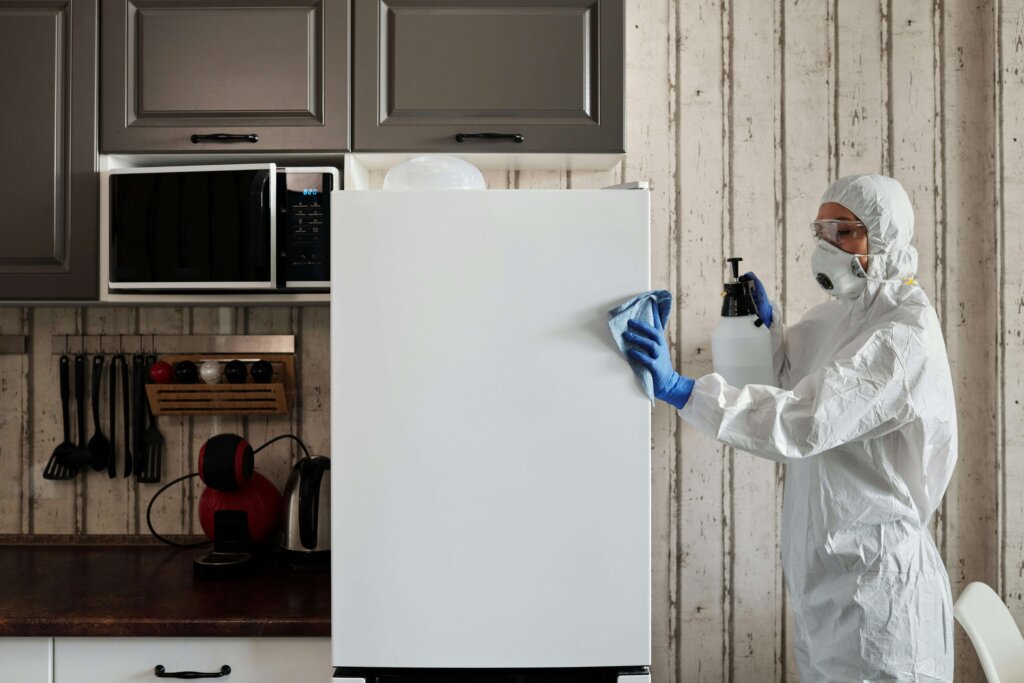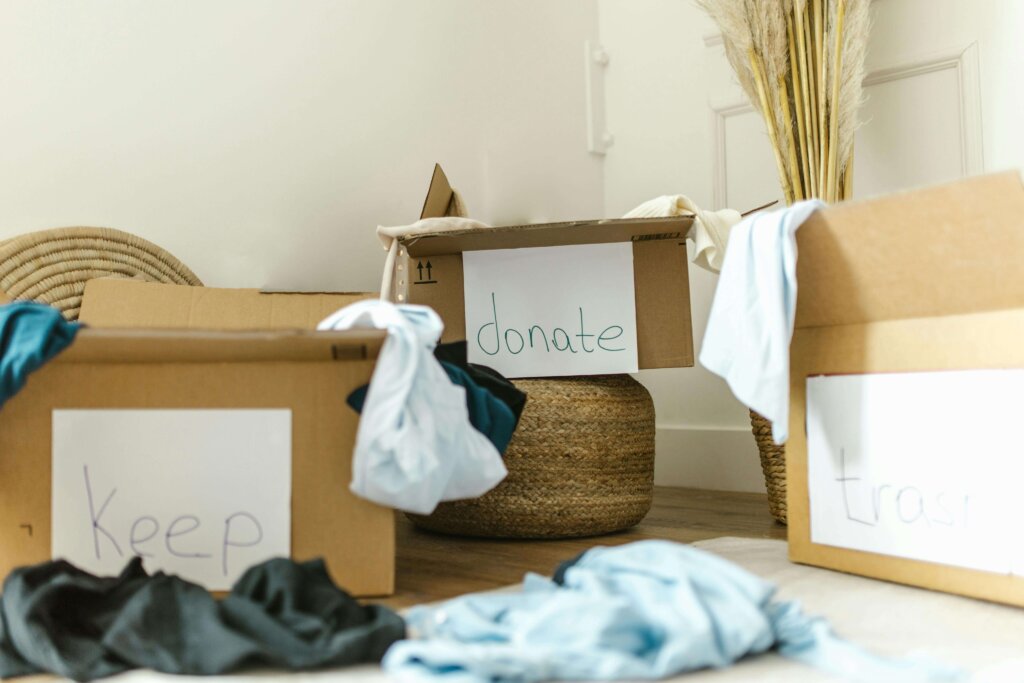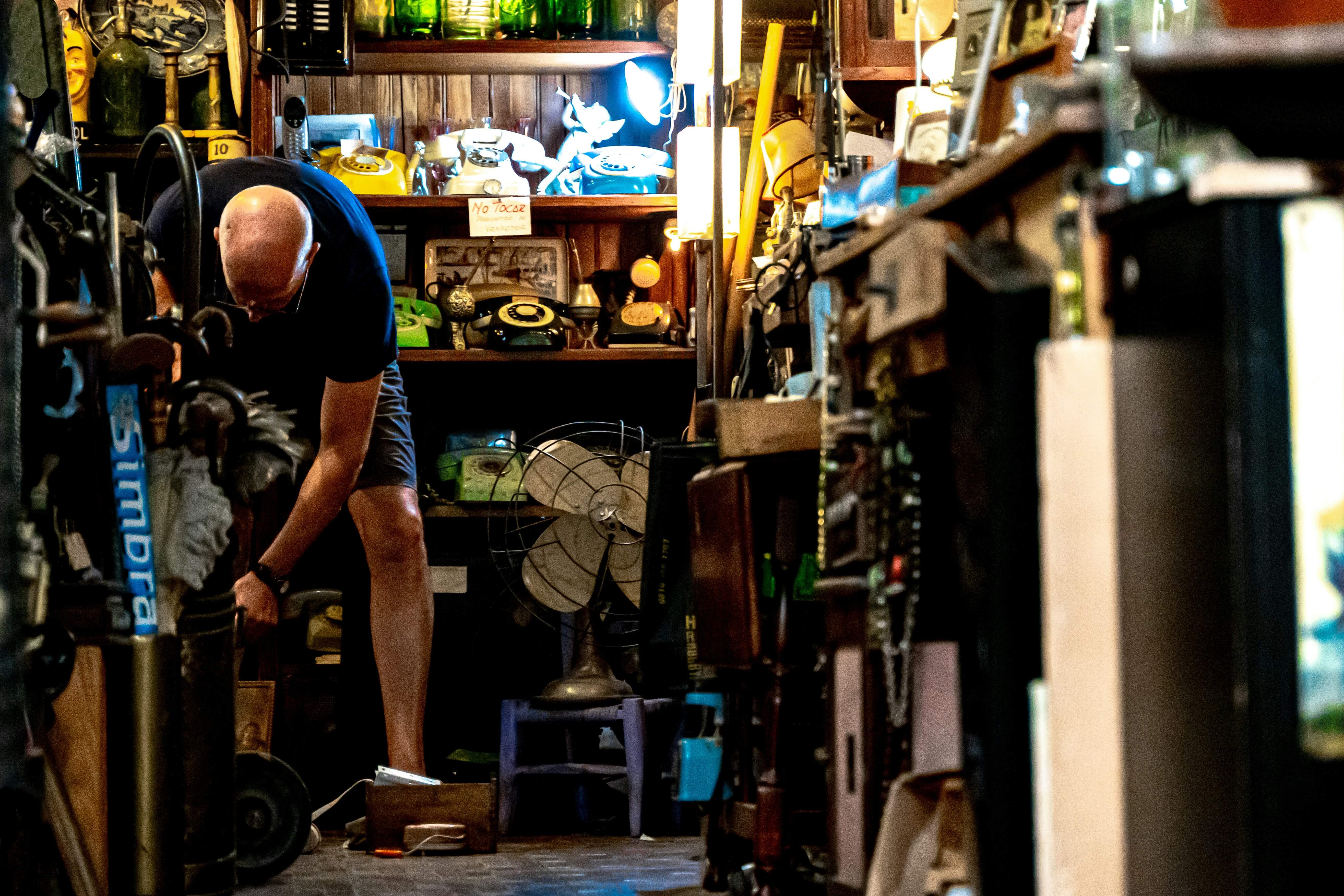Introduction
Navigating the daunting task of cleaning a hoarder’s house involves more than just physical clutter. It delves into emotional and logistical challenges requiring a compassionate and systematic approach.
Hoarding disorder profoundly affects individuals and families, making the process of decluttering not only physically demanding but also emotionally sensitive. Therefore, contemplating the complexities involved is key, as it requires careful planning, patience, and a strategy respecting each situation’s unique circumstances.
Know that each item is significant to the hoarder. Make decisions about what to discard and keep a delicate balance between respecting their attachments and addressing the need for a livable environment.
This article explores practical strategies blending compassion with effective cleaning techniques. These strategies aim to declutter a space and foster healing and transformation.
Understanding Hoarding
Hoarding is a complex psychological disorder characterized by an excessive accumulation of belongings and an inability to discard them, regardless of their value. It goes beyond mere clutter or collecting items, often resulting in severe living space limitations and significant distress for the affected individual.
Psychologically, hoarding is linked to difficulties in decision-making. There is anxiety about discarding items and a perceived need to save possessions others might view as useless or of little value.
Common signs of hoarding behavior are:
- Persistent difficulty parting with possessions, regardless of their actual value.
- Acquiring and saving many items that seem unnecessary or useless to others.
- Living spaces become cluttered to the point where they can’t be used.
- Hoarding causes distress or impairment in social, occupational, or other important areas of functioning.
- Accumulated items may create health hazards or safety risks (e.g., fire hazards, blocked exits).
Preparing for the Cleanup

Thorough preparation is essential before embarking on the challenging task of cleaning a hoarder’s house. This preparation ensures safety, efficiency, and sensitivity to the individual’s needs.
Assessing the Situation
Begin by conducting a comprehensive assessment of the hoarding situation. This includes evaluating the extent of clutter and identifying specific areas of concern, such as blocked pathways, fire hazards, or structural damage.
Understanding the scope of the hoarding behavior helps in planning and prioritizing areas for cleanup while considering the emotional and psychological implications for the hoarder.
Safety Precautions
Safety should be a top priority during the clean-up process. Hoarded homes often present health hazards, such as mold, pests, and biohazards.
Before starting, ensure you have appropriate protective gear, including gloves, masks, and possibly hazmat suits depending on the severity of the situation.
Gathering Supplies
Equip yourself with the necessary supplies and tools to manage the cleanup effectively. These supplies include heavy-duty trash bags, cleaning solutions suitable for disinfecting surfaces, brooms, dustpans, and containers for sorting items.
Depending on the conditions, you might also need tools for moving heavy objects or addressing specific cleanup challenges. These tools include biohazard cleanup kits or professional-grade cleaning equipment.
Creating a Plan
Setting Goals
Start by defining clear and realistic cleanup goals. These goals should align with the immediate needs of restoring the living environment and the long-term goals of supporting the individual.
Goals may include clearing pathways, restoring functional living spaces, and improving safety and hygiene.
Prioritizing Areas
Identify specific areas within the home requiring immediate attention. Begin with areas that pose the greatest safety risks or are critical for restoring basic functionality, such as kitchens, bathrooms, and bedrooms.
Consider the emotional attachment the hoarder may have towards certain areas when deciding where to start.
Developing a Timeline
Create a timeline outlining each phase of the clean-up process, from initial sorting and decluttering to deep cleaning and organization. Break down tasks into manageable steps and allocate realistic timeframes for completing each phase.
Remember, be flexible in your timeline, as unexpected challenges or emotional reactions from the hoarder may require adjustments.
Building a Support Team
Assembling a Team
Having a supportive team is crucial in managing hoarding. Consider involving friends, family members, or even professional cleaners who specialize in hoarding situations.
Each member should be committed to restoring the living space while approaching the task with empathy and understanding.
Assigning Roles
Delegate tasks to team members based on their strengths and capabilities. Assigning specific roles ensures each person contributes effectively to the clean-up process.
For instance, someone may excel at organizing items for donation, while another might be skilled at deep cleaning or providing emotional support to the hoarder.
Providing Emotional Support
Throughout the clean-up process, prioritize emotional support for the hoarder. Recognize that cleaning a hoarder’s house can evoke intense emotions, including anxiety, guilt, and attachment to belongings.
Therefore, encourage open communication, validate their feelings, and offer reassurance. Professional counselors or therapists specializing in hoarding disorder can also provide invaluable emotional support.
Starting the Cleanup

Sorting and Categorizing
The first step is to sort items systematically into categories such as keep, donate, sell, and dispose. This process requires patience and understanding, as hoarders often attach sentimental value to many possessions.
Encourage the hoarder to make decisions about each item, providing gentle guidance on prioritizing essential items and letting go of unnecessary clutter.
Handling Valuables
Identify and set aside valuable or sentimental items early in the clean-up process. These items may include family heirlooms, important documents, or valuable collectibles.
Safely storing these items separately ensures they are protected throughout the cleaning process and prevents accidental disposal.
Dealing with Trash
Managing and disposing of trash and unnecessary items is critical to restoring a safe and livable environment. Utilize heavy-duty trash bags and bins to collect garbage, broken items, and items beyond repair.
Consider renting a dumpster for large-scale clean-ups to facilitate proper disposal. Explore the options for recyclable items and handle hazardous materials according to local regulations.
Deep Cleaning
Once the initial clutter has been sorted and removed, the next phase of cleaning a hoarder’s house involves deep cleaning to restore hygiene and livability to the space.
Cleaning Surfaces
First, clean surfaces thoroughly using appropriate cleaning agents and tools. Dust and debris may have accumulated over time, so use microfiber cloths or vacuum cleaners to capture particles effectively.
Moreover, scrub surfaces with disinfectants to eliminate germs and bacteria, focusing on high-touch areas like countertops, doorknobs, and light switches.
Addressing Odors
Hoarding environments often harbor persistent odors due to mold, mildew, pet dander, or accumulated dust. To combat odors effectively, ventilate the space by opening windows and using fans.
Use odor-neutralizing products or natural remedies like baking soda or vinegar to absorb and eliminate odors from carpets, upholstery, and fabrics. For severe cases, consider professional odor removal services specializing in deep cleaning and deodorizing.
Sanitizing the Space
Thorough sanitization is key to ensure a clean and healthy living environment post-clean-up. Use disinfectants approved by health authorities to sanitize surfaces, floors, and other areas. Pay special attention to bathrooms and kitchens, where hygiene is paramount.
Steam cleaning carpets and upholstery can also help eliminate allergens and bacteria, contributing to cleaner indoor air quality.
Long-Term Strategies
Successfully cleaning a hoarder’s house involves addressing the immediate clutter and implementing long-term strategies to prevent recurrence and maintain a healthy living environment.
Preventing Recurrence
Therapeutic Support
Encourage the hoarder to seek ongoing therapy or counseling to address the emotional factors contributing to hoarding. Cognitive-behavioral therapy (CBT) and hoarding-specific therapies can help individuals develop coping mechanisms and change their behaviors over time.
Support Networks
Build a strong support network around the hoarder, including family, friends, or support groups. Regular check-ins and discussions about clutter and organization can provide accountability and encouragement.
Educational Resources
Provide resources and information about hoarding disorder and its treatment. Understanding the disorder can empower the hoarder to recognize triggers and adopt healthier behaviors.
Regular Maintenance
Establish Cleaning Routines
Develop a cleaning schedule that includes daily tasks such as dishes and laundry, and weekly tasks like vacuuming and dusting. Also, schedule monthly tasks such as deep cleaning and decluttering.
Organizational Systems
Implement organizational systems to promote tidiness and efficiency. Use storage solutions like bins, shelves, and labels to keep items organized and easily accessible.
Regular Assessments
Conduct regular assessments of the living space to identify and address potential clutter hotspots. Promptly discard or donate items that are no longer needed or used.
Professional Help
Professional Cleaning Services
Consider hiring professional cleaning services periodically to deep clean and sanitize the home. Professional cleaners can efficiently handle tasks requiring specialized equipment or expertise.
Legal and Financial Advisors
In complex cases involving legal or financial issues related to hoarding, consult with professionals such as lawyers or financial advisors who can provide guidance and support.
Conclusion
Navigating the process of cleaning a hoarder’s house is a journey requiring both practical strategies and emotional resilience. By recognizing the physical and psychological complexities involved, we can approach this task with empathy and understanding.
Know that each step, from initial assessment to long-term maintenance, plays a vital role in transforming the living environment and supporting the hoarder’s long-term well-being.
Contact A-List Properties today for assistance in managing and maintaining properties with unique needs, such as hoarder cleanups. Our expert team is ready to provide compassionate support and effective solutions tailored to your situation.
Reach out now to discuss how we can help transform properties with care and professionalism.

Zach Shelley
Zach Shelley is a seasoned real estate investor with a diverse network spanning across the nation. As the founder of his own real estate venture, Zach is committed to offering innovative solutions to homeowners facing various real estate challenges.. Through his dedication and strategic approach, Zach continues to make a significant impact in the real estate industry, providing homeowners with alternative pathways to navigate their property transactions.



